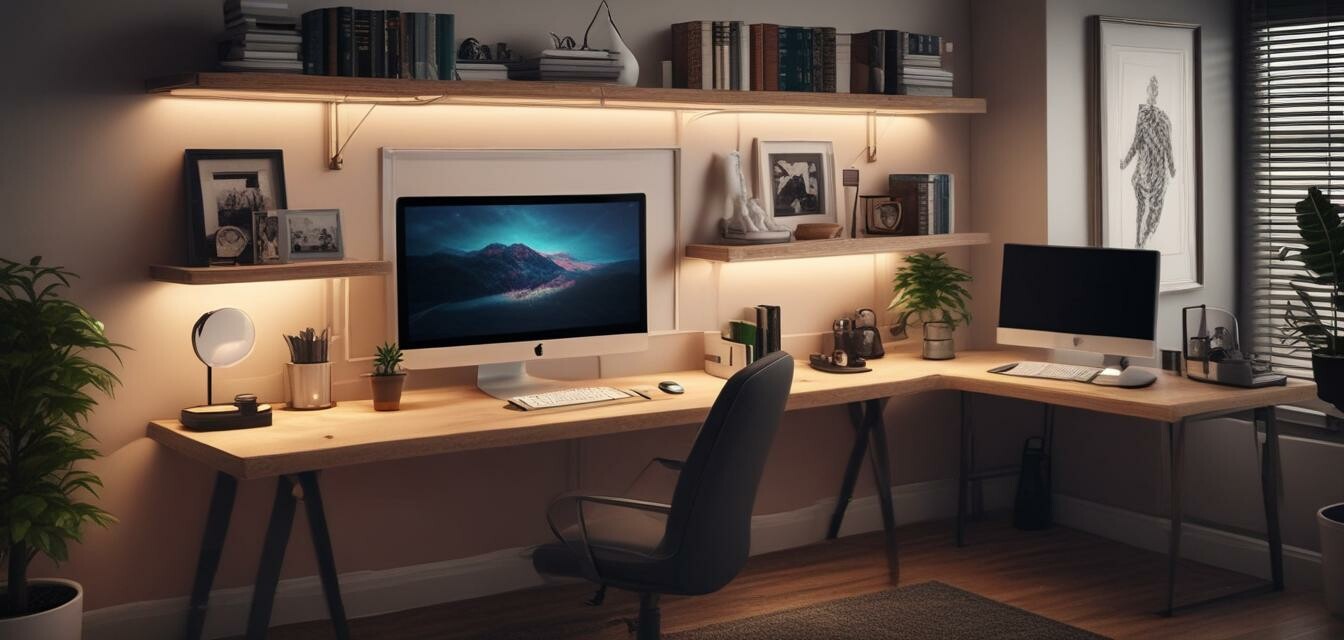
Ergonomic Layout Ideas for Your Home Office
Key Takeaways
- Comfort and productivity go hand-in-hand in a well-designed home office.
- Ergonomic furniture choices can contribute to better posture and reduced fatigue.
- Optimal monitor placement is crucial for reducing eye strain.
- Smart organization can enhance workspace efficiency.
- Incorporating natural elements can boost mood and creativity.
Creating an ergonomic layout for your home office doesn't just improve your comfort; it can also enhance your productivity and well-being. By incorporating ergonomic furniture and thoughtful design elements, you can transform your workspace into a hub of efficiency and inspiration. In this article, we'll explore various ergonomic layout ideas that can make a significant difference in your work-from-home experience.
The importance of ergonomic design
Ergonomic design revolves around creating a workspace that supports your body and encourages healthy work habits. This is especially crucial for individuals spending long hours seated at their desks. Here are some key benefits of an ergonomic home office:
- Reduces risk of injuries such as repetitive strain injuries (RSIs).
- Improves overall comfort and reduces fatigue.
- Encourages better posture and spine alignment.
- Enhances focus and productivity.
- Creates a more aesthetically pleasing environment.
Key elements of an ergonomic home office layout
To achieve an ergonomic layout, several elements need to be considered. Let's break these down:
| Element | Recommendations |
|---|---|
| Chair | Invest in an ergonomic chair with adjustable height, lumbar support, and armrests. |
| Desk | Choose a desk with an appropriate height. Consider a sit-stand desk for versatility. |
| Monitor | Position your monitor at eye level to reduce neck strain and keep it about an arm's length away. |
| Keyboard and mouse | Keep them close to your body to avoid stretching; consider ergonomic designs. |
| Lighting | Use bright but soft lighting to reduce glare and eye strain. Incorporate desk lamps with adjustable brightness. |
Ergonomic layout ideas
1. The L-shaped desk setup
This layout maximizes corner space and provides ample room for multiple monitors or projects. Place your main computer monitor in the center, with your keyboard and mouse nestled below. You can utilize the side desk for stacks of paperwork or other equipment, keeping everything within easy reach.
2. The U-shaped layout
A U-shaped layout is ideal for those who need a workstation with plenty of space. It offers deep work areas for a more organized workflow. Keep your primary focus in the middle and allocate the ends for secondary tasks where you can switch between different devices.
3. The multi-monitor setup
For those who multitask, a multi-monitor setup is essential. Adjust monitor heights to ensure they're at eye level. This will reduce eye strain and allow for better organization of tasks across screens.
Organization tips for your ergonomic home office
Tips for beginners
- Declutter your desk to foster a clean, focused environment.
- Use cable management solutions to keep wires out of sight and out of the way.
- Incorporate storage solutions that fit your style while keeping essential items close at hand.
- Consider using a planner or digital tools to manage tasks effectively.
- Include plants or artwork that inspire and motivate you.
Conclusion
Designing an ergonomic home office is not merely about aesthetics; it impacts your productivity significantly. By investing time in your layout and choosing the right furniture, you can create a workspace that is comforting and conducive to achieving your goals. Don't hesitate to explore more about setting up your home office through our Setup Inspiration section for innovative ideas.
Pros
- Improved posture and comfort levels.
- Increased productivity and focus.
- Reduced likelihood of discomfort and injuries.
- Aesthetically pleasing designs can enhance creativity.
Cons
- Initial investment may be higher than traditional setups.
- Requires consistent organization and upkeep.
- May need space to accommodate larger furniture.